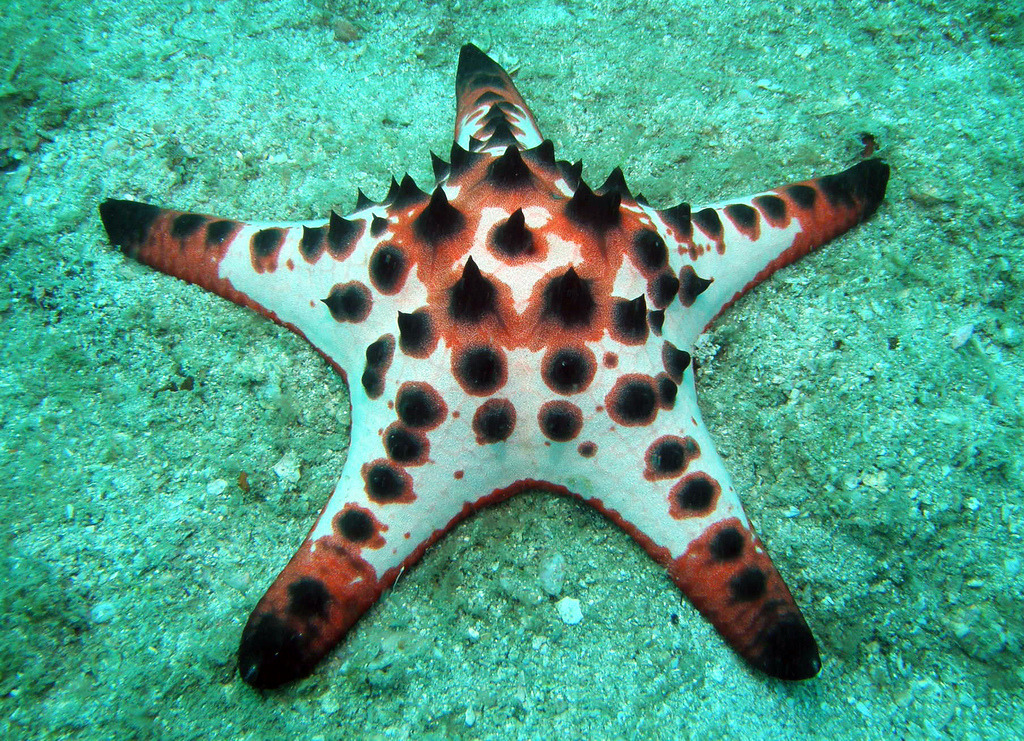On the basis of body shape, nature of skeleton, location of mouth and anus, functions of water vascular system and characteristics of digestive system, echinoderms are classified into two subbphyla-
(1) Subphylum 1:
Eleutherozoa: (Gr. eleutheros, free + zoias, animal) Free living echinoderms.
ADVERTISEMENTS:
Class 1:
Asteroidea (Gr. Aster, star + eidos, forms).
(i) Starfish or sea stars.
(ii) 5 radiating arms.
ADVERTISEMENTS:
(iii) Tube feet with suckers.
(iv) Anus and madreporite aboral.
(i) Pedicellariae present.
ADVERTISEMENTS:
Example:
Pentaceros, Asterias etc.
Class 2:
Ophiuroidea: (Gr. Ophis, snake + eidos, form)
(i) Brittle stars and allies.
(ii) Central disc and five jointed slender and flexible (even branched in s.ome) arms.
(iii) Anus and pedicellariae absent.
(iv) Mouth at oral surface, madreporite at aboral surface.
(v) Tube feet in two rows, not sucker like, nonlocomotory, but sensory.
(vi) Larval form ophiopluteus.
Examples:
Basket star (Gorgnox cephalus), Brittle stars (ophiothrix) etc.
Class 3:
Echinoidea: (Gr. Echinos, hedgehog + eidos, form)
(i) Sea urchins and dollars.
(ii) Body is discoid and without arms.
(iii) Mouth at lower pole covered by strong and sharp teeth, forming a biting and chewing apparatus called Aristotle’s lantern.
(iv) Tube feet slender with suckers.
(v) Ambulacral grooves covered by ossicles and pedicellariae are 3 jawed.
(vi) Larval forms pluteus, and echinopluteus.
Class 4:
Holothuroidea: (Gr. holothurion, sea cucumber + eidoid forms).
(i) Body massive, elongated in oral and aboral axis, no arms.
(ii) Mouth at anterior end surrounded by many hollow retractile tentacles.
(iii) Tube feet usually present with suckers.
(iv) Skin leathery and soft without spines and pedicellariae.
(v) Respiration and excretion by two long and highly branched tubes (respiratory tree)
(vi) Larval form auricularia.
Examples:
Holothuria, Cucumeria etc.
(2) Subphylum 2:
Pelmatozoa (Gr. Pelmatos, stalk + zooios, animals) stalked sedentary echinoderms.
Class 5:
Crinoidea: (Gr. Crinon. Lilly + eidos, forms)
(i) Body distinguished into a small disc and five or more (multiple of five) branched and flexible arms.
(ii) Disc enclosed in a hard cup-shaped calyx.
(iii) Arms with pinnules but spines and pedicellariae absent in skin.
(iv) Mouth and anus or oral surface.
Examples:
Antedon, Neometra etc.

